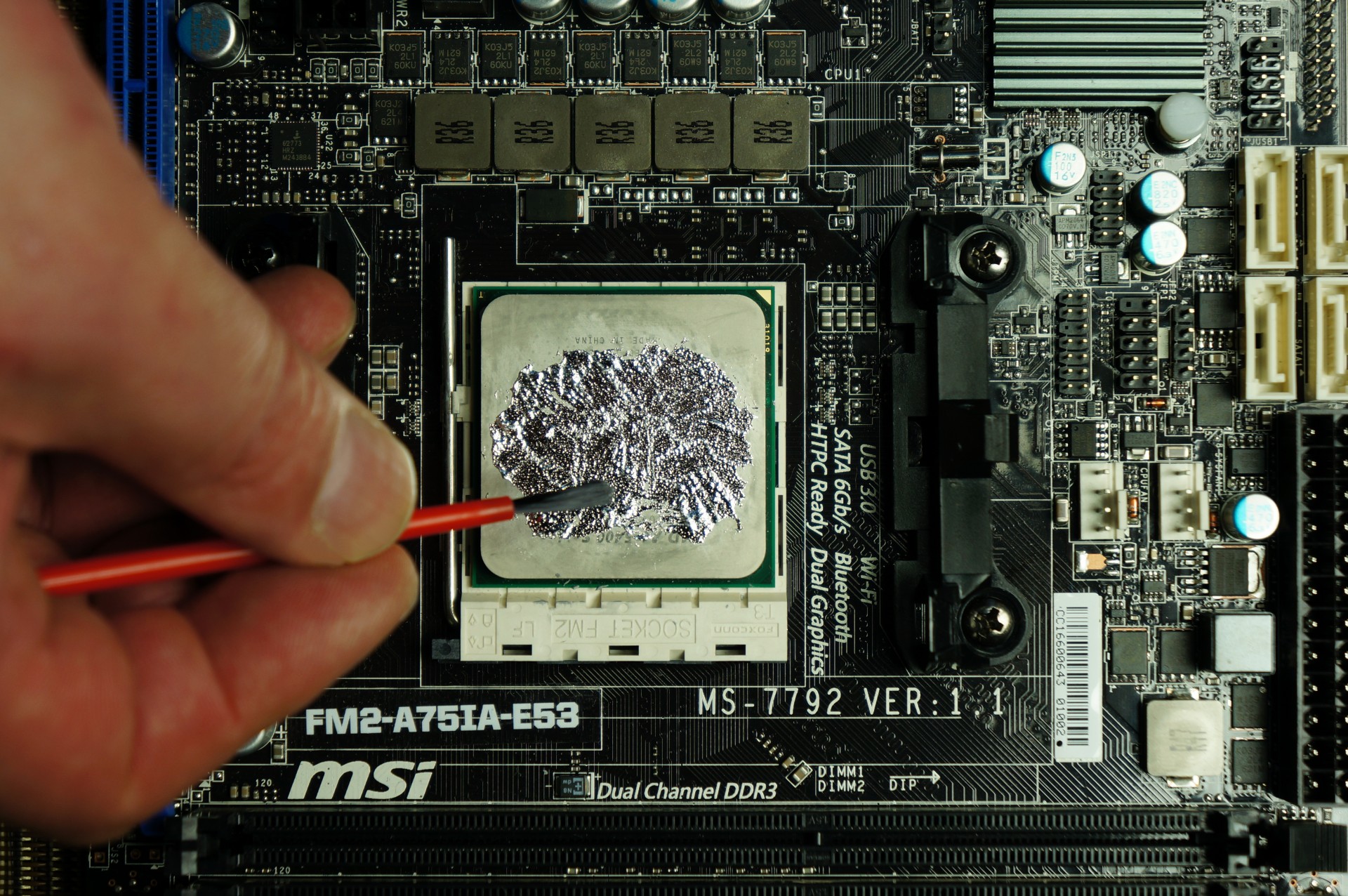Thermal Paste Comparison, Part Two: 39 Products Get Tested
It's time for the numbers. In addition to testing liquid metal compounds and thermally conductive adhesives, each paste is discussed on its own merits before we chart out the results of four usage cases. After all, these products behave differently.
Coollaboratory Liquid Ultra: Application
Applying the compound is tricky, which is why we don't really recommend Liquid Pro. Liquid Ultra is a little more like the pastes you're used to, though still a lot "wetter". Its composition is still a point of concern because it corrodes light metals like aluminum and certain alloys. This could have an adverse effect on thermal conductivity, even causing an insulating layer to form. Copper- and nickel-plated surfaces are alright though, as are heat spreaders.
Once you've roughened up your CPU, you can drip Liquid Ultra on it, spreading it around with an enclosed brush. The amount you'll use varies by CPU size, but plan to use about half of the compound on AMD processors and about a third on Intel's. The video shows that you can even add liquid metal while spreading it out. Depending on the mounting pressure of your cooler, you may want to spread the compound more than the video shows. Just be careful; you don't want this corrosive, conductive material to get squeezed out the sides.
The next video illustrates an alternate method that requires less material. What we want to stress, however, is that it is better to put the liquid metal on a CPU away from its processor interface, thus protecting the motherboard from spills. We're putting the chip on our cleaning sponge to make sure none of its pins get bent.
On one hand, the liquid is spread more evenly and less of it is needed. But on the other, more metal balls form. Since they could cause a short circuit, they need to be collected. This method only works when the surface has been roughened, and it yields (marginally) better results.
Get Tom's Hardware's best news and in-depth reviews, straight to your inbox.
Current page: Coollaboratory Liquid Ultra: Application
Prev Page 39 Thermal Compounds Get Benchmarked And Tested Next Page Coollaboratory Liquid Ultra: Application Problems And Clean-Up
Igor Wallossek wrote a wide variety of hardware articles for Tom's Hardware, with a strong focus on technical analysis and in-depth reviews. His contributions have spanned a broad spectrum of PC components, including GPUs, CPUs, workstations, and PC builds. His insightful articles provide readers with detailed knowledge to make informed decisions in the ever-evolving tech landscape
-
dragonfang18 I loved the toothpaste part. What about Vicks Vaporub? I wonder how that thing would do.Reply -
TehDudeMan Great article guys! As a reader for over 10 years pretty much daily, this reminds me of the old Tom's Hardware. These type of in depth articles on enthusiast products are what I love.Reply -
Matt Edwards A great article, agree the application of the compound, not the compound itself is most important.Reply
Like ledpellet I too am curious about these diamond compounds. Wonder if it offers similar results to the Coollaboratory products with an easier application, or if the results simply don't justify the price. E.g in Australia, Innovation Cooling IC7 Diamond 7 Carat Thermal Compound Paste - 1.5G can be found for as much as $25. The cheapest I have managed to find it for is $15. For that price it would want to be good considering the leading GELID GC Extreme, can be found for around $8. -
danwat1234 Coollaboratory Liquid Ultra isn't all that good after a year of hard use. In fact, it completely hardens / dries. On my X9100 after 9 months of nearly 24/7 100% load, I started seeing high temps and after 1 year auto shut downs while crunching. Turns out it was shutting off because it hit the 105 C thermal protection.Reply
Opened it up; thermal compound was as hard as a rock. has to pocket knife blade and sand it down.
So for longevity it sucks. That is something to consider, not just initial performance, but performance months and years down the road. Especially for laptops that aren't designed to be opened up frequently for repasting.
After trying Liquid Ultra many times and having it fail on me, I've put on Arctic MX-2 that has a supposed 8 year durability rating. Initial performance is great, we'll see how it lasts (been 3 weeks so far). -
slomo4sho CLU and Arctic MX-4 are both great products. MX-2 and MX-4 can often be found free after rebate so they are an exceptional value.Reply
